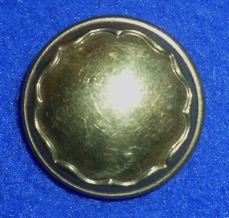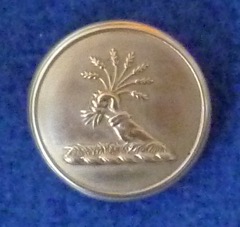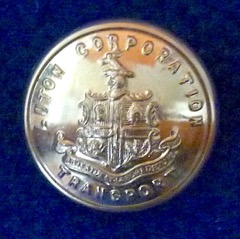Luton Corporation Tramways
Owner Luton Corporation
Opened 21st February 1908 (electric)
Operator (lessee) J G White and Company Limited
Lease transferred May 1909 (Balfour, Beatty and Company Limited)
Took over (operation) 21st February 1923 (Luton Corporation)
Closed 16th April 1932
Length 5.25 miles
Gauge 4ft 8½ins
Button description (1908-1909) Pattern of button currently unknown
Button description (1909-1923) Plain with scalloped rim
Materials used Brass or nickel
Button Line reference [None]
Button description (1923-1932) The municipal crest (an arm, emerging from a field, holding seven ears of wheat).
Materials known Nickel
Button Line reference None
Comment Photographs taken during the tenure (lease) of Balfour Beatty and Co clearly show that the uniform buttons were plain with a scalloped rim. Following the municipal take-over of 1923, it is likely that the uniforms would have borne Luton 'seven ears of wheat' buttons, a device used by several other municipal departments.
Although ‘Luton Corporation Transport’ buttons were certainly used on uniforms during the motorbus era, it is believed that Luton did not start using the fleet/departmental name 'Luton Corporation Transport' until after the demise of the tramway; indirect support for this comes from the buttons themselves, which are chrome, a material which did not come into widespread use for buttons until well into the 1930s (see link).
In addition to the Luton Corporation Tramways, Balfour Beatty also owned, operated or had a significant interest in the following systems: Cheltenham and District Light Railway, City of Carlisle Electric Tramways, Dartford Council Light Railways, Dunfermline and District Tramways, Falkirk and District Tramways, Leamington and Warwick Electric Tramways, Llandudno and Colwyn Bay Electric Railway, Llanelly Tramways, Mansfield and District Light Railway, Nottinghamshire and Derbyshire Tramways and Wemyss and District Tramways.



